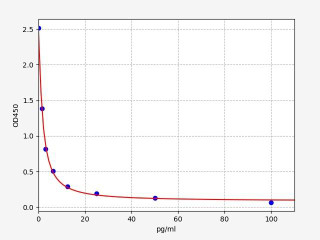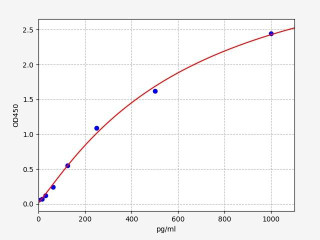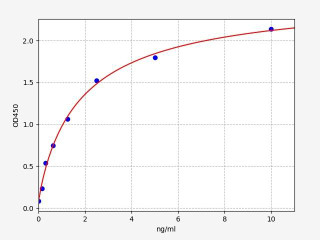GPCRs (G Protein Coupled Receptors): A Guide
What Are GPCRs?
GPCRs, or G protein-coupled receptors, are a large family of membrane proteins that play a crucial role in cell signaling. They are involved in transmitting signals from the extracellular environment to the inside of cells, thereby regulating various physiological processes.
GPCRs are classified into different classes based on their structural and functional characteristics. Some of the major classes include Rhodopsin-like (Class A), Secretin-like (Class B), Metabotropic glutamate/pheromone (Class C), Fungal mating pheromone receptors (Class D), cAMP receptors (Class E) and Frizzled/Smoothened (Class F) receptors. These classes exhibit distinct ligand-binding properties and signaling mechanisms.
GPCRs interact with G proteins, which are composed of three main subunits: alpha (α), beta (β), and gamma (γ). These G proteins function as a family of small GTPases, playing important roles in various aspects of cellular physiology. The alpha and gamma subunits are linked to the plasma membrane by lipids, forming crucial connections for G protein signaling.
GPCR
GPCR Structure
GPCRs consist of a single polypeptide chain that spans the cell membrane in a zigzag pattern, forming seven transmembrane alpha-helical segments. These helices are connected by alternating extracellular and intracellular loops. The N-terminus of the receptor is positioned on the extracellular side, while the C-terminus resides on the intracellular side of the membrane. This unique seven-transmembrane domain structure allows GPCRs to interact with ligands on the extracellular side and couple with intracellular signaling proteins to initiate diverse cellular responses. The specific arrangement of these helices creates a ligand-binding pocket within the extracellular region, enabling the recognition and binding of various signaling molecules. The intracellular loops and C-terminus play crucial roles in mediating interactions with downstream signaling proteins, facilitating signal transduction and cellular responses.
G-Protein-Coupled Receptors
GPCR Ligands
GPCR ligands encompass various types that interact with GPCRs. The vast majority of GPCRs are activated by small-molecule ligands, including hormones, neurotransmitters, and chemokines. Hormones, such as peptides, steroids, and eicosanoids, are the most common type of GPCR ligand. Neurotransmitters, such as acetylcholine, dopamine, serotonin, and norepinephrine, play a crucial role in mediating communication between neurons. Chemokines, a family of small proteins, regulate leukocyte trafficking. Additionally, some GPCRs are activated by photons, specifically responding to light stimuli.
GPCRs Signaling Pathway
GPCR signaling is a complex process involving the activation of G proteins by GPCRs and other receptors, such as the Toll-like receptor (TLR) family. Upon ligand binding, GPCRs undergo conformational changes that induce the activation of associated G proteins. This activation triggers a conformational change in the G protein, enabling it to exchange guanosine diphosphate (GDP) for guanosine triphosphate (GTP). The GTP-bound α subunit dissociates from the βγ subunits, allowing both subunits to interact with downstream effectors, such as enzymes or ion channels.
1. Receptor activation: When an external signaling molecule binds to a GPCR, it causes conformational changes in the receptor, leading to the activation of associated G proteins. This interaction initiates the GPCR signaling pathway.
2. Signaling cascade initiation: The activated G protein interacts with downstream effectors, activating them in turn. This cascade of signaling events amplifies the cellular response and propagates the signal further within the cell.
3. Effector activation: Effector activation is the final stage of the GPCR pathway, resulting in the cellular response to the initial signal. The specific response depends on the nature of the signaling molecule and the target cell. Agonist ligands typically lead to cell activation, while antagonist ligands usually result in cell inhibition.
The α subunit, in its active GTP-bound form, modulates the activity of these effectors, leading to the generation of intracellular second messengers or the initiation of signaling cascades. The βγ subunits can also independently regulate various intracellular processes. Eventually, the GTP on the α subunit is hydrolyzed to GDP, leading to the reassociation of the α and βγ subunits and the termination of signaling.
This highly orchestrated GPCR signaling pathway plays a critical role in transmitting extracellular signals to intracellular processes, influencing diverse physiological responses in cells and tissues. The specific effects of GPCR signaling depend on the type of G protein and its downstream targets, including enzymes, ion channels, and other membrane components involved in cellular communication.
GPCR Signaling Cascades
Regulation of GPCR Signaling
The regulation of GPCR signaling is a complex process involving multiple mechanisms that ensure tight control and fine-tuning of cellular responses. One important process is desensitization, where continuous or prolonged stimulation of GPCRs leads to reduced receptor responsiveness. This is achieved through receptor phosphorylation by kinases like G protein-coupled receptor kinases (GRKs) and subsequent binding of arrestins, which inhibit further G protein activation. Another regulatory mechanism is internalization, wherein the activated receptors are internalized from the cell surface into intracellular compartments, modulating their availability for signaling. Additionally, GPCRs undergo processes like receptor sequestration, recycling, and degradation, which contribute to the fine-tuning and termination of signaling events. These regulatory mechanisms play crucial roles in maintaining cellular homeostasis and ensuring appropriate responses to extracellular stimuli.
Second Messenger Signaling in GPCR Pathways
The intracellular signaling pathways of GPCRs involve the activation of various second messenger molecules. Examples of second messengers include cyclic adenosine monophosphate (cAMP), cyclic guanosine monophosphate (cGMP), inositol triphosphate (IP3), and calcium ions. GPCRs can activate adenylyl cyclase, a membrane-associated enzyme that synthesizes cAMP from ATP molecules upon activation by the GTP-bound alpha subunit. cAMP plays a crucial role in mediating responses to sensory input, hormones, and nerve transmission. Phospholipase C is another frequent target of G proteins, which generates two-second messengers, DAG and IP3, from membrane lipids phosphatidylinositol. This pathway is involved in various bodily functions, including blood clotting. Ion channels, which span the cell membrane, play a significant role in GPCR signaling by allowing the entry or exit of second messengers. Some GPCRs directly activate specific ion channels, while others indirectly activate them by generating second messengers like cAMP and IP3. Additionally, the activation of certain GPCRs leads to the opening of voltage-gated ion channels, resulting in changes in cell membrane potential and the activation of various cellular processes.
GPCR Related Kits

| IP3 (Inositol Triphosphate) ELISA Kit | |
|---|---|
| ELISA Type | Competitive |
| Sensitivity | 0.094ng/ml |
| Range | 0.156-10ng/ml |

| Human GPCR LGR7 / Relaxin R1 ELISA Kit | |
|---|---|
| ELISA Type | Sandwich |
| Sensitivity | 9.375pg/ml |
| Range | 15.625-1000pg/ml |

| Human PDE5A / cGMP-specific 3',5'-cyclic phosphodiesterase ELISA Kit | |
|---|---|
| ELISA Type | Sandwich |
| Sensitivity | 0.094ng/ml |
| Range | 0.156-10ng/ml |
Physiological Functions of GPCRs
GPCRs play pivotal roles in a wide range of physiological functions due to their widespread distribution and ability to trigger cellular responses to various extracellular stimuli. These receptors mediate sensory information, including pheromone sensation, olfaction, light perception, and taste. In fact, about half of the 800 GPCRs are involved in sensory functions. Additionally, more than 90% of GPCRs are expressed in the brain, where they participate in crucial processes related to mood, cognition, pain, appetite, and contribute to numerous neurodegenerative and psychiatric disorders. Moreover, GPCRs are essential components of the immune system, regulating immune cell differentiation, migration, and the secretion of antimicrobial compounds. Their aberrant expression or activation is associated with autoimmune diseases and immunodeficiencies. GPCRs also play roles in cancer progression, influencing tumor cell proliferation, invasion, migration, and metastasis. Their involvement extends beyond tumor cells to various cells in the tumor microenvironment. Overall, GPCRs are central to many physiological functions and offer potential targets for therapeutic interventions.
The Importance of GPCRs in Pharmacology
GPCRs have substantial significance in pharmacology and serve as primary drug targets for therapeutic interventions. Approximately 30% of currently marketed drugs act on GPCRs, highlighting their pharmaceutical importance. By targeting specific GPCRs, drugs can modulate cellular signaling pathways and influence various physiological processes. GPCR-targeted drugs are used in diverse therapeutic areas, including cardiovascular diseases, respiratory disorders, neurological disorders, psychiatric conditions, and cancer. Understanding GPCR structure, ligand interactions, and signaling pathways has facilitated the development of drugs that specifically modulate GPCR activity. Additionally, ongoing research on GPCRs continues to uncover new potential targets for drug discovery.
Written by Lauryn McLoughlin
Lauryn McLoughlin completed her undergraduate degree in Neuroscience before completing her masters in Biotechnology at University College Dublin.
Recent Posts
-
Enavatuzumab: Revolutionizing Cancer Research Through Novel Therapeutics
Quick Facts About EnavatuzumabWhat is Enavatuzumab?Enavatuzumab is a monoclonal antibo …17th Dec 2025 -
Alemtuzumab: Mechanism, Applications, and Biosimilar Advancements
Quick Facts About AlemtuzumabWhat is Alemtuzumab?Alemtuzumab is a monoclonal antibody …17th Dec 2025 -
Praluzatamab: Unveiling the Promise of CD47-Targeted Therapy in Cancer Research
Quick Facts About PraluzatamabWhat is Praluzatamab?Praluzatamab is an experimental mon …13th May 2025




